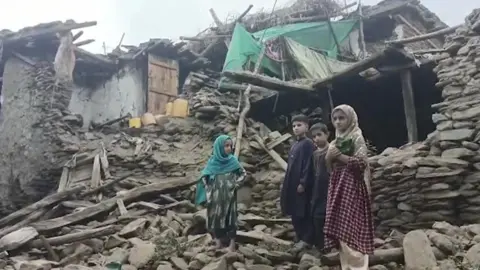A 6.0 magnitude earthquake has struck Afghanistan's mountainous eastern region, with authorities saying hundreds of people have been killed.
The quake hit at 23:47 local time on Sunday (19:17 GMT) and its epicenter was 27km (17 miles) away from Jalalabad, the country's fifth-largest city, in eastern Nangarhar province.
It was shallow - only 8km deep - and was felt 140km away in the capital, Kabul, as well as in neighboring Pakistan. Hundreds of people are thought to have died.
The initial quake was followed by a number of large aftershocks, which are thought to have caused further deaths. Details are still emerging, and it could be some time before the extent of the damage and the number of deaths is known.
What we know so far
Initial reports indicate significant casualties and widespread damage across parts of Nangarhar and Kunar provinces. These mountainous areas are extremely challenging to access even in the best of times, which is hampering rescue and relief operations.
More than 600 people are feared dead, the Taliban's interior ministry has said, but warns there is still no clear death toll. The road leading to the epicenter has been blocked because of a landslide, so the Taliban government is using helicopters to get people out. Multiple sources from the government have said that dozens of houses are buried under the rubble. Aid from international organizations has been requested.
Why don't we know more?
The nature of the terrain means it is difficult to access, and there are limited communications - meaning it will take longer to get updates on the situation. There is also likely to be damage to infrastructure, making it even harder to reach affected areas.
Can Afghanistan cope?
Afghanistan was pushed into economic collapse when the Taliban took over, and more than 23 million Afghans are in need of humanitarian assistance, according to the International Rescue Committee. Most foreign donations have been suspended, exacerbating the crisis.
Why are earthquakes particularly damaging in Afghanistan?
Afghanistan is prone to earthquakes because it is located on several fault lines. Shallow earthquakes are more destructive, and buildings typically made of weak materials increase the risk of significant damage.

















